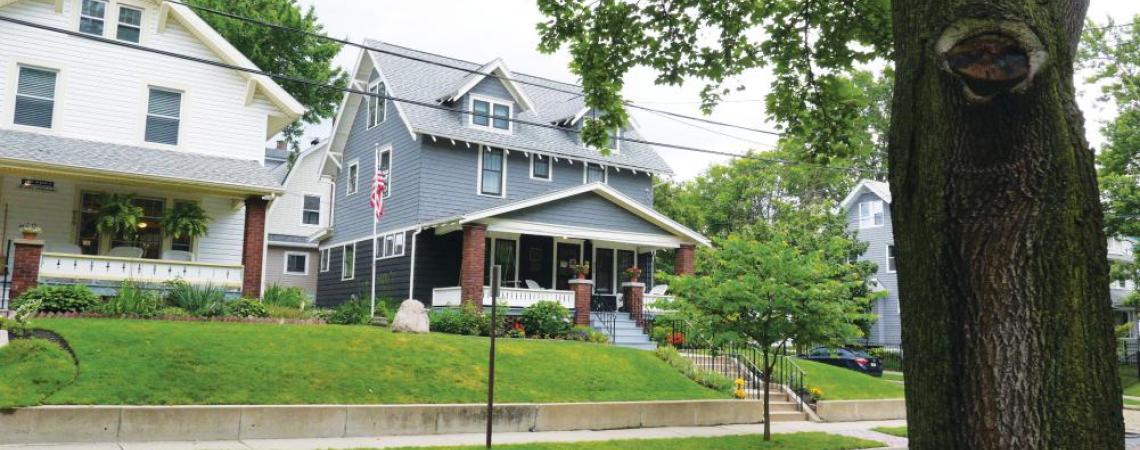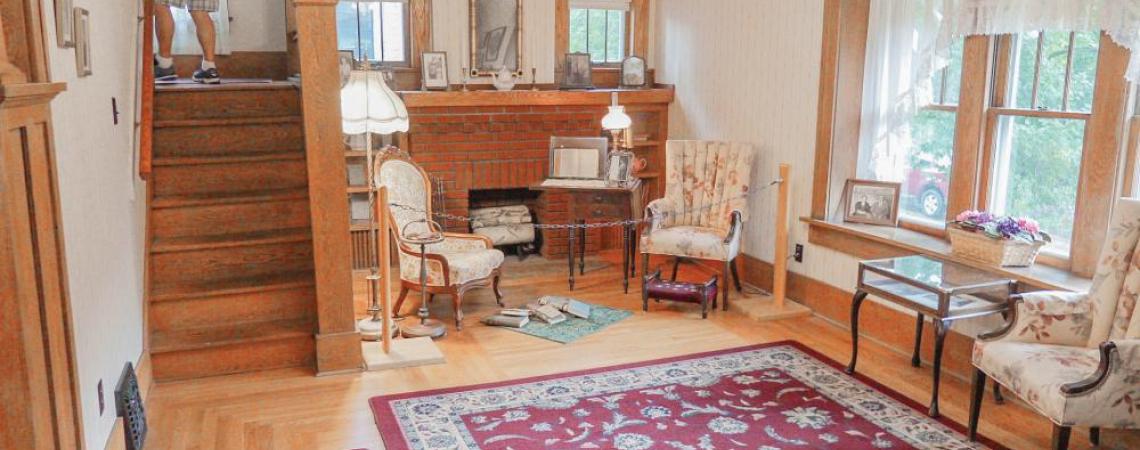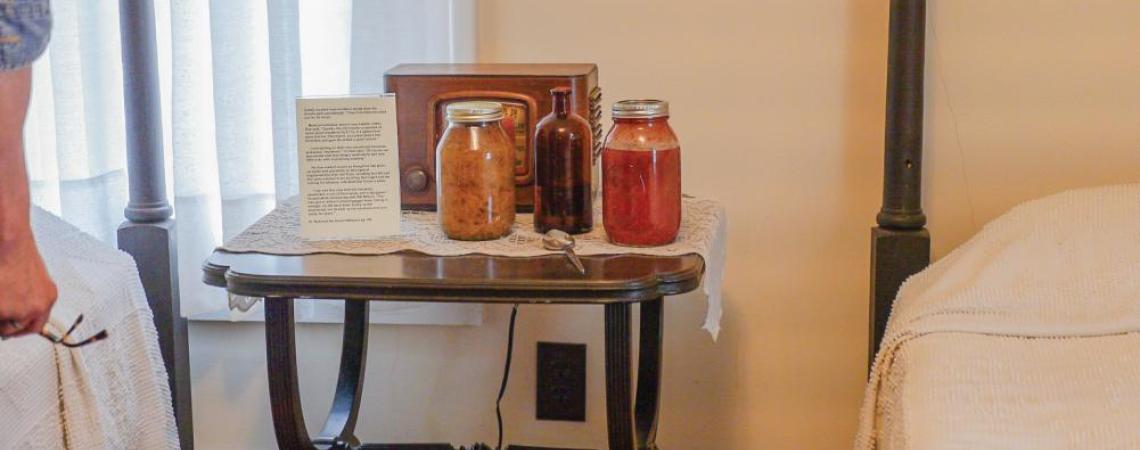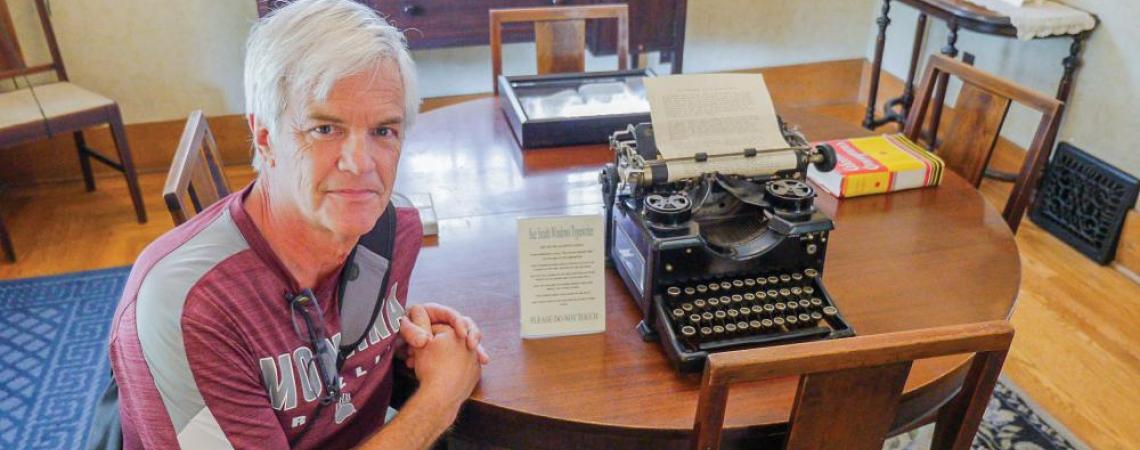[Editor’s note: Ohio Cooperative Living honors the tradition in Alcoholics Anonymous in which members are
granted a level of anonymity in the press.]
When Pat B and her husband, both from Columbus, visited an Alcoholics Anonymous (AA) event during a vacation in Auckland, New Zealand, the couple found themselves engulfed by attendees from South Asia and Oceania, all interested in their Ohio heritage. The intrigue was not connected to the Rock & Roll Hall of Fame or Cedar Point, but because it’s home to Akron, the birthplace of AA, an organization that author Kurt Vonnegut once called “America’s most nurturing contribution to the culture of this planet.”
The Akron home of proctologist and AA co-founder Robert Smith, known as Dr. Bob’s Home, is a National Historic Landmark and on the National Register of Historic Places. It’s the epicenter of the global AA movement, which spans 180 countries with more than 2 million members.
A visit to Dr. Bob’s Home is a pilgrimage for those in recovery from alcohol and substance abuse.
Aptly, there are 12 steps leading from the sidewalk to “Dr. Bob’s House” on Ardmore Avenue in Akron.
Launched in Akron in 1935, AA is a fellowship dedicated to overcoming alcohol addiction, extensively documented in its publications such as Alcoholics Anonymous (known as “The Big Book”), Dr. Bob and the Good Oldtimers, and AA Grapevine.
The publications document the encounter between Smith and New York stockbroker Bill Wilson in Akron in 1935. Recently sober, Wilson was on a business trip to Akron, where he stayed at the Mayflower Hotel (now Mayflower Manor Apartments). Seeking another alcoholic to talk to, Wilson made a random call to a church from a phone booth, which led him to meet Smith. They talked for five hours that night, igniting the inception of AA.
Wilson subsequently lived with Smith for months, and over the next 15 years, that small Arts and Crafts home at 855 Ardmore Ave. became a gathering place for individuals struggling with alcoholism. Smith and his wife, Anne, welcomed visitors, initially attempting to sober them up with a mixture of sauerkraut, tomatoes, and Karo syrup, while also hosting meetings with abundant coffee. The discussions that took place there between Smith and Wilson laid the foundation for the organization and its renowned 12-step program, now applied to various forms of addiction, from food addiction to workaholism.
“It was much more than just a surgeon’s home where they met and wrote books and talked,” says Eric Dentler, a marketer for Golden Gate Recovery in the San Francisco Bay Area, who has twice visited the site. “Dr. Bob’s Home was the first detox center and the first sober- living home.”
Operated by volunteers, Dr. Bob’s Home evokes a typical day in 1935 and poignantly has 12 steps leading to the entrance. Open 354 days annually, the home attracts around 6,000 to 7,000 visitors each year, including those in recovery, their families, and medical professionals from institutions like the Cleveland Clinic, according to Paul G, PR chairperson for Dr. Bob’s Home.
[Dr. Bob’s Home] is home to all who are members of AA. It’s where the rest of our lives began.
Those visitors hail from all 50 states as well as Canada, Mexico, European nations, and even distant locations such as Mongolia and Indonesia. Visits surge to 4,000 during Founder’s Day weekend, an annual celebration at the University of Akron marking the anniversary of Smith’s last drink.
A living museum, the home features original artifacts such as books and furniture, photos of the Smith family, voice recordings, and the places that Smith hid alcohol from his wife. Of special interest are copies of the New Yorker and Saturday Evening Post whose articles about AA made the organization thrive in its infancy. A gift shop and Dr. Bob’s library are located in the house next door.
The organization also provides online tours for its global audience. A recent one led by Paul and archivist Gail L included 129 rapt participants from the United Kingdom, many leaning in, some recording, and more than a few sharing the emotional impact of and gratitude for the tour. “This brought me to tears,” said one participant. “I’ve been living this for 34 years, and this hit me in the heart.”
Paul G remembers a February blizzard when Dr. Bob’s Home had no visitors. Amidst the peaceful atmosphere, he heard the sound of air brakes and saw a Greyhound bus carrying 75 women heading to a conference in Toledo. Their arrival instantly transformed the atmosphere with laughter and warmth, reflecting the welcoming nature of the home.
“That is exactly what we want to happen,” says Paul, “[Dr. Bob’s Home] is home. It’s home to all that are members of AA. It’s where the rest of our lives began. It’s because of the things that happened in that living room that many of us are alive today.”
The idea of “home” is central to a visit to Dr. Bob’s. When someone walks in the front door, they are greeted by a volunteer with a “Welcome home” greeting, which frequently incites a strong emotional response for visitors, says Paul, who once witnessed a Romanian priest fall to his knees in deference to the sacred space.
Dentler says that greeting evoked his own tears on his first visit in 2019, which he describes as a spiritual journey to celebrate 10 years of sobriety. “I will never forget the feeling when a young docent shouted out, ‘Welcome home,’” says Dentler. Although the room was full, his tears went unnoticed.
“What happened in Akron, that story is in every Big Book in every country,” says Gail, referring to the chapter entitled, “A Vision for You.” “You say you’re from Akron, Ohio, and someone’s connected to this program, you become like a rock star.”
It was that chapter that hit a nerve for Bill S from Melbourne, Australia, who plans to visit Dr. Bob’s Home as part of his fourth trip to the United States this summer. “When I read ‘A Vision for You,’ it really struck home. Could I really live a sober life without a dependence on alcohol and be happy? I was desperate for some home and direction in my life, and there was something about the way the chapter was written. It’s in a language that is so old-fashioned, but so relevant to my life.”















